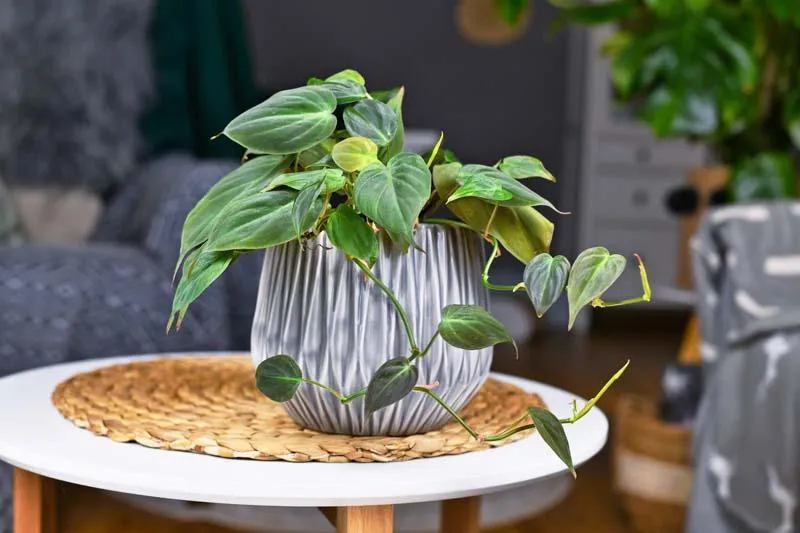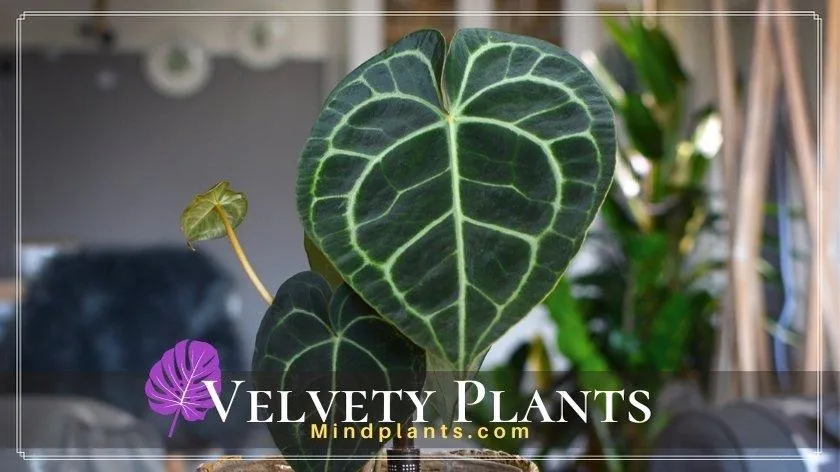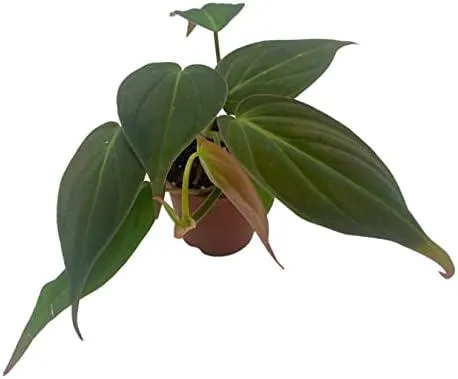An Introduction to Velvet Leaf Philodendron Varieties
The velvet leaf philodendron is a popular houseplant known for its unique velvety, textured leaves. Within this species, there exists a wide range of varieties that offer gardeners different leaf colors, sizes, and growth habits. In this article, we’ll explore some of the most common velvet leaf philodendron varieties and what makes each one unique. By the end, you’ll have a good understanding of which variety might be the best fit for your home or garden.
Common Velvet Leaf Philodendron
The basic velvet leaf philodendron, known scientifically as Philodendron erubescens, is what most people think of when they picture this plant. It has dark green, heart-shaped leaves with a velvety texture. New leaf growth emerges burgundy or wine-colored before maturing to green. This variety grows vigorously as a clinging vine or can be trained as a trailing plant. It’s a great choice for beginners since it’s very hardy and tolerant of low light. From my experience, the common velvet leaf philodendron is versatile and will thrive in all sorts of homes and outdoor spaces.
Xanadu Philodendron
A strikingly beautiful cultivar, the Xanadu philodendron (Philodendron erubescens ‘Xanadu’) has leaves splashed or variegated with shades of cream, yellow, and dark green. The variegation patterns on each leaf are unique, adding great visual interest. This variety grows more slowly than the plain green type. It requires slightly brighter light to bring out its coloration. I’ve found that the Xanadu is a real eye-catcher in a room, drawing attention to its lush foliage. However, the variegation means it can be prone to losing its vibrant patterns without optimal care.
Black Cardinal Philodendron
For a truly dramatic leaf color, you can’t beat the black cardinal philodendron (Philodendron erubescens ‘Black Cardinal’). As the name suggests, its leaves emerge blackish-purple before fading to a deep burgundy or maroon shade. Unique hues like this make it a real stunner. This cultivar has smaller leaves than average on long, arching petioles. Its small stature and intense color make it well-suited to tabletop displays. From experience, the black cardinal’s striking leaves demand admiration wherever it’s placed. Just be aware it may lose some of its vibrancy without ample light exposure.
Other Varieties
Countless other named cultivars and hybrids continue to be developed within the velvet leaf philodendron group. Here are a few additional popular selections:

- Moonlight: Features leaves splashed with white and creamy yellow variegation. A lovely delicately painted look.
- Pink Princess: Produces young growth tinted soft pinkish shades. Mature leaves fade to green.
- White Knight: Nearly all-white leaves, a dramatic contrast to the species’ usual colors. Needs optimal care.
- Melanochrysum: Dark, almost black leaves with reddish tints. Adored for its dramatically dark foliage.
New designer cultivars continue emerging on the market all the time. Velvet leaf philodendrons offer a wide palette to suit any home’s aesthetic. With their unique textures and hues, they’re sure to become conversation pieces.
Care Tips for All Varieties
While velvet leaf philodendrons have a reputation for being easy to care for, some varieties demand slightly more exacting conditions. Here are a few tips applicable across the board:
– Provide bright, indirect light. Most will thrive in eastern or western windows.
– Soil should be well-draining potting mix. These plants are prone to root rot in heavy, soggy soil.
– Water when the top inch of soil is dry. Allow the soil to dry out between waterings.

– Fertilize monthly in spring and summer with a diluted liquid houseplant food.
– Propagate via stem or leaf cuttings in water or moist soil. These guys root with ease.
– Prune off spent or damaged growth to encourage bushier new growth.
Pay close attention to light and water needs of cultivars like Xanadu or White Knight requiring extra care. With the right conditions under your belt, you can basically watch these plants grow!
Final Thoughts
In closing, the velvet leaf philodendron genus makes for such versatile indoor plants. As you can see, their varieties run the gamut from classic deep green to beautifully patterned or intensely hued cultivars. With their low maintenance requirements and joy of thriving in average home conditions, they really are tough to beat. I hope this overview has given you a feel for which type might suit your space and taste best. Happy planting – let me know if you have any other questions!

Philodendron Varieties Comparison
| Variety | Leaf Color | Light Requirement | Size |
|---|---|---|---|
| Green | Dark green | Low to medium | Small to medium |
| Burgundy | Dark burgundy/red | Medium to bright | Medium to large |
| Brasil | Dark green with bright pink/red centers | Medium to bright | Medium to large |
| Prince of Orange | Variegated green and orange | Medium to bright | Medium to large |
| Xanadu | Variegated Cream and Dark Green | Medium to bright indirect | Medium |
FAQ
-
What kind of velvet leaf philodendron varieties are available?
Basically, there are quite a few different velvet leaf philodendron varieties to choose from. Some popular options include:
- Philodendron hederaceum – The most common variety with heart shaped green leaves.
- Philodendron ‘Silver Stripe’ – Has bright green leaves with white stripes.
- Philodendron ‘Brazil’ – Dark green leaves with a purple underside.
- Philodendron ‘Red Emerald’ – Deep red new leaves that fade to green.
-
How fast do velvet leaf philodendrons grow?
Their growth rate can vary depending on conditions, but in general velvet leaf philodendrons grow fairly quickly. Under the right circumstances with bright light and frequent watering, you may see a new leaf unfurling every couple weeks. At the same time, they aren’t too aggressive and can be kept in check with less-than-ideal care.
-
What kind of care do they need?
Velvet leaf philodendrons are pretty easy to care for. They like indirect sunlight, consistently moist soil, and moderate temperatures. You’ll want to water whenever the top inch of soil dries out. However, overwatering can cause root rot so it’s better not to keep the soil saturated. Along with regular watering and pruning, that’s quite literally all the care they need!
-
Can they be grown as houseplants or only outdoors?
Interestingly, despite being native to tropical rainforests, velvet leaf philodendrons do perfectly well as long as they aren’t subject to freezing temperatures. So they can certainly be grown indoors as happy houseplants. Just give them the right light, water and soil conditions. On the other hand, in zones 9-11 you can also grow them outdoors where they’ll grow much larger.
-
How do you prune velvet leaf philodendrons?
Pruning is necessary occasionally to keep your philodendron lush and bushy. Simply use clean pruning shears to cut off sections of older stems that have become leggy or non-productive. Snip just above a leaf node. The stems will then propagate new growth. Do this every few months in spring and summer. Where do you cut stems? Basically anywhere above a leaf node works well for propagation.

-
Are there any pests or diseases to watch out for?
Thankfully, velvet leaf philodendrons are pretty resistant to most pests and diseases when cared for properly. About the only issue you may perhaps encounter is spider mites, but those typically only appear under dry, low humidity conditions. So just keep the soil moist and provide humidity, along with occasional pest inspections, and you shouldn’t have any major problems. Your philodendron will remain looking stunning for many years to come!
